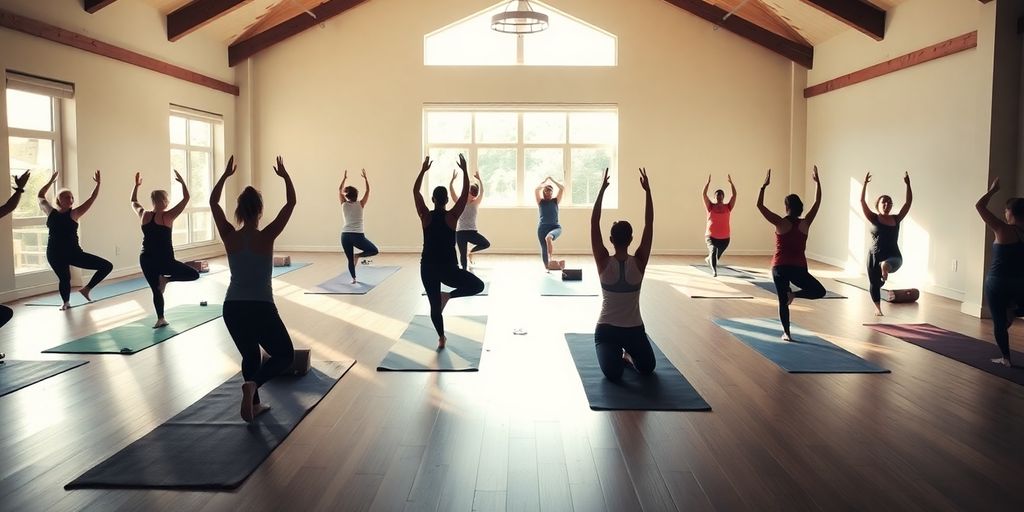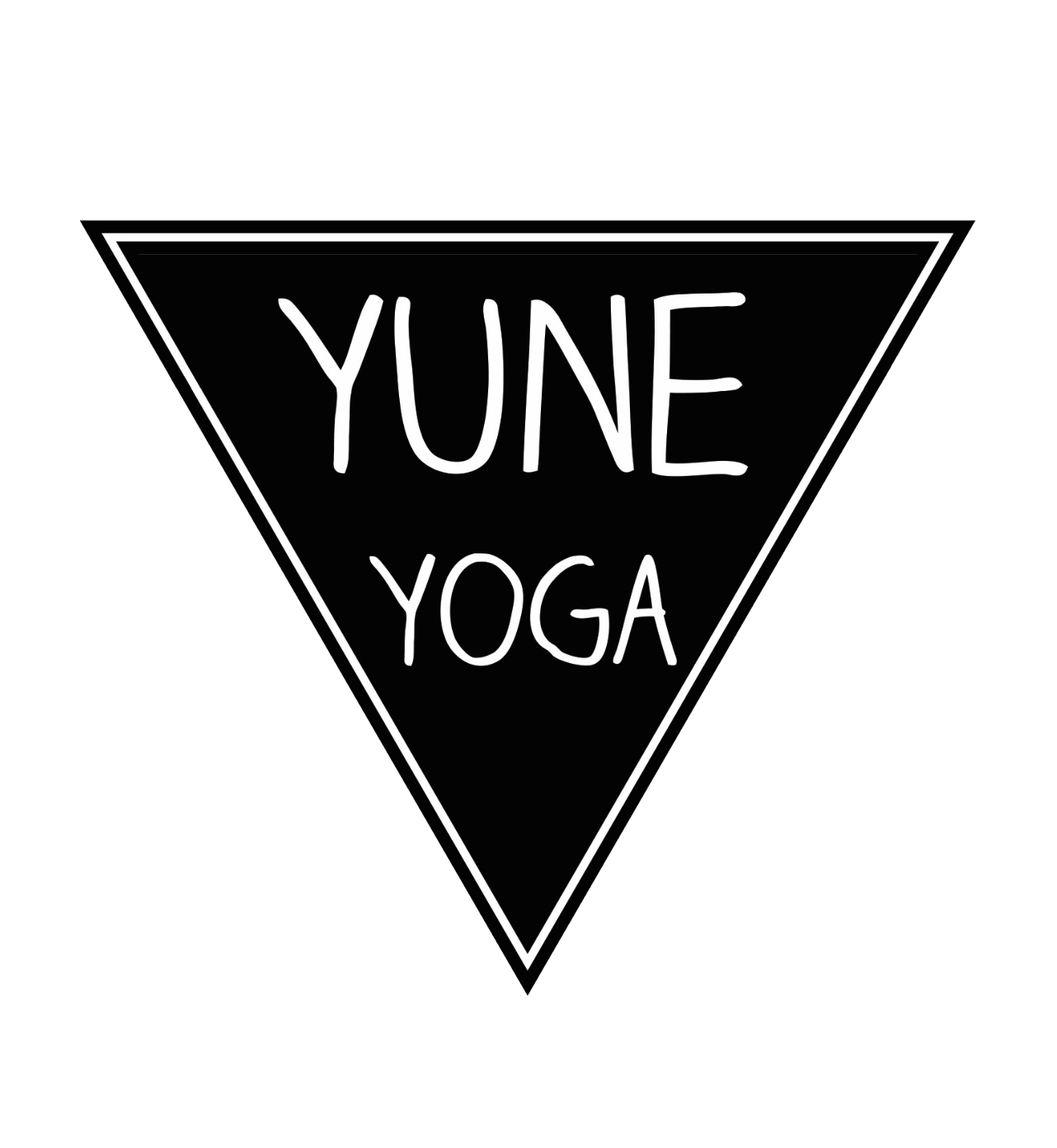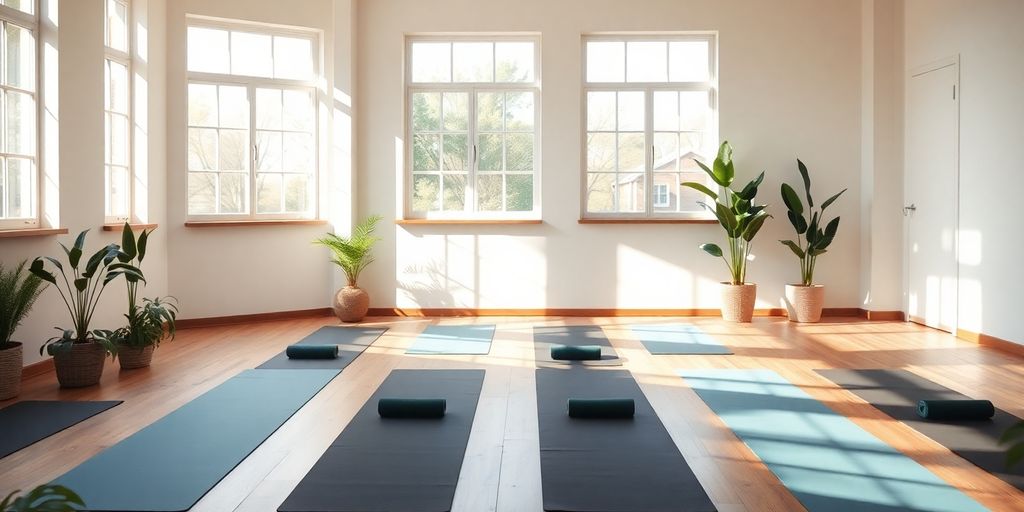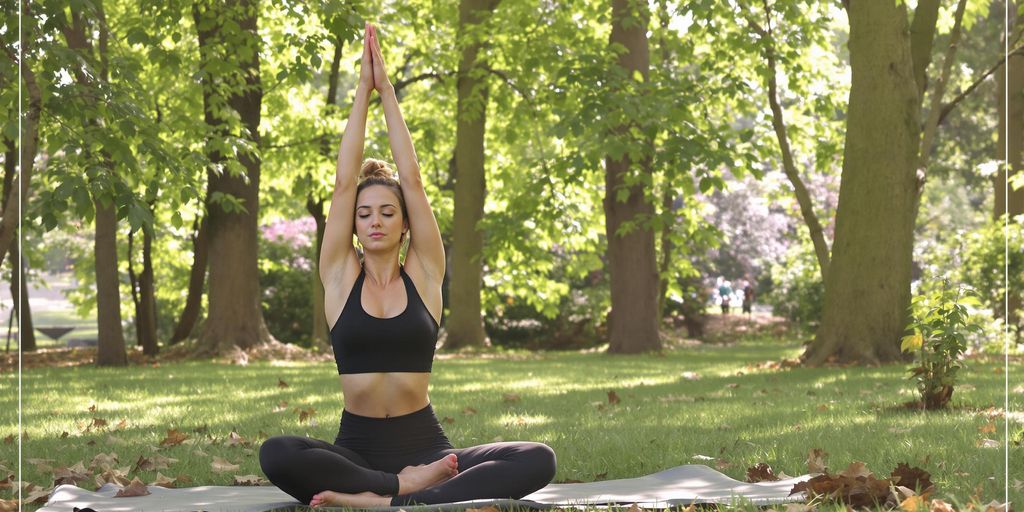
Exploring Yoga Poses and Names: A Comprehensive Guide to Asanas for Every Level
Yoga is more than just exercise; it's a way to connect your mind and body while improving your overall health. Each yoga pose, or asana, has a unique purpose and meaning, often tied to its Sanskrit name. Whether you're a beginner or have been practicing for years, understanding the names and benefits of these poses can deepen your experience. Let's break it down, step by step.
Key Takeaways
- Yoga poses, called asanas, are designed to balance the body and mind.
- Sanskrit names of poses often reflect their purpose or inspiration, like animals or nature.
- Beginner poses focus on relaxation and stability, while advanced ones challenge strength and flexibility.
- Breathing and awareness play a huge role in enhancing the benefits of each pose.
- Different poses offer specific benefits, such as stress relief, energy boosts, or improved focus.
Understanding the Basics of Yoga Poses and Names
What Are Yoga Asanas?
Yoga asanas, or poses, are physical postures practiced to promote balance, flexibility, and strength. They are a key part of yoga’s eightfold path, which integrates physical, mental, and spiritual well-being. Each pose has its unique purpose, whether it’s to calm the mind or energize the body. Traditionally, asanas were developed as a way to prepare the body for long periods of meditation.
The Importance of Sanskrit Names
Sanskrit, the ancient language of India, holds deep significance in yoga. The names of yoga poses in Sanskrit often describe the shape, movement, or symbolic meaning of the posture. For instance, "Tadasana" translates to Mountain Pose, symbolizing stability and grounding. Learning these names connects practitioners to yoga’s historical roots and enhances their understanding of the practice.
How Yoga Poses Influence Mind and Body
Yoga poses don’t just work on the physical level—they impact the mind and emotions too. Here’s how different types of poses can influence you:
- Standing poses: Build strength and improve focus.
- Seated poses: Encourage relaxation and introspection.
- Inversions: Stimulate energy flow and boost confidence.
- Twists: Aid detoxification and improve digestion.
Practicing yoga regularly creates a harmonious connection between the body and mind, fostering a sense of inner peace and vitality.
Exploring Beginner-Friendly Yoga Poses and Names
Seated Poses for Relaxation
Seated poses are a great way to ease into yoga, especially if you're new to it. These poses encourage relaxation and help you settle your mind and body. Here are a few to try:
- Easy Pose (Sukhasana): A simple cross-legged position that promotes calmness. It's perfect for meditation or just taking a breather.
- Bound Angle Pose (Baddha Konasana): Sit with your feet together and knees apart. This pose gently stretches your hips and inner thighs.
- Hero Pose (Virasana): Kneel on the floor with your feet tucked under. It's great for improving posture and grounding your energy.
Standing Poses for Stability
Standing poses build strength and balance, making them ideal for beginners looking to establish a solid foundation. Some beginner-friendly options include:
- Mountain Pose (Tadasana): This might seem simple, but standing tall with your feet together helps improve alignment and focus.
- Tree Pose (Vrikshasana): Balance on one leg while placing the other foot on your inner thigh. It’s a fun way to test your stability.
- Chair Pose (Utkatasana): Imagine sitting back into a chair while keeping your arms raised. It strengthens your legs and core.
Restorative Poses for Calming the Mind
Sometimes, you just need to slow down, and restorative poses are perfect for that. These poses help relax your body and calm your thoughts:
- Child's Pose (Balasana): Kneel and stretch your arms forward as you rest your forehead on the ground. It's like a gentle hug for your body.
- Corpse Pose (Shavasana): Lie flat on your back with your arms by your sides. This is the ultimate pose for relaxation.
- Reclining Bound Angle Pose (Supta Baddha Konasana): Lie on your back with your feet together and knees apart. It’s a soothing way to open up your hips.
Yoga is not just about flexibility; it's about finding balance—physically, mentally, and emotionally. Whether you're seated, standing, or resting, each pose offers something unique to your practice.
For a strong start to your yoga journey, explore essential yoga poses for beginners, like lunges, Cat-Cow, and Happy Baby. These foundational poses will help you build confidence and ease into the practice.
Intermediate Yoga Poses and Their Benefits

Balancing Poses for Focus
Balancing poses are like the ultimate test for your concentration and core strength. They teach you how to stay steady, both physically and mentally. A classic intermediate balancing pose is Warrior III (Virabhadrasana III). It challenges your leg strength, engages your core, and demands laser focus to keep your balance. Practicing these poses can help improve your posture and coordination over time.
Twisting Poses for Detoxification
Twisting poses are not just about flexibility; they also help detoxify your body. These poses compress and release your abdominal organs, which can aid digestion and boost your metabolism. For example, Marichyasana I (Sage Marichi Pose) is a fantastic intermediate twist that stretches your spine and shoulders while massaging your internal organs. It's like hitting the refresh button for your body.
Inversion Poses for Energy Flow
Inversions might seem daunting, but they’re incredibly rewarding. Poses like Dolphin Pose or even a supported Shoulder Stand can shift your perspective—literally. These poses improve circulation, calm your nervous system, and give you an energy boost. Plus, they help build upper body strength and confidence in your practice.
Intermediate poses are where you really start to feel the magic of yoga. They push you out of your comfort zone while offering benefits that go beyond the mat.
Advanced Yoga Poses for Experienced Practitioners
Arm-Balance Poses for Strength
Arm-balance poses are the ultimate test of upper body strength and mental focus. These poses demand a solid core, steady breath, and unwavering concentration. Here are three challenging arm-balance poses to explore:
- Firefly Pose (Tittibhasana): This pose strengthens the arms, wrists, and lower back while improving balance and flexibility.
- Peacock Pose (Mayurasana): Known for its detoxifying benefits, this pose requires a strong core and steady wrists.
- Side Crow Pose (Parsva Bakasana): A great way to build strength in the obliques while testing your balance.
Each of these poses offers a unique challenge, pushing practitioners to their limits while building endurance and resilience.
Deep Backbends for Flexibility
Deep backbends are not only visually stunning but also incredibly beneficial for improving spinal flexibility and opening the chest. Practicing these poses regularly can help counteract the effects of sitting for long periods. Consider adding these to your routine:
- King Pigeon Pose (Kapotasana): A deep stretch for the hip flexors and shoulders, this pose also enhances lung capacity.
- Wheel Pose (Urdhva Dhanurasana): A classic backbend that strengthens the legs, arms, and spine while boosting energy levels.
- Bow Pose (Dhanurasana): This pose stretches the entire front body, from the chest to the thighs.
Deep backbends can feel intense, but they leave you with a sense of lightness and freedom when practiced mindfully.
Challenging Inversions for Mastery
Inversions are the hallmark of advanced yoga practice, requiring both physical strength and mental clarity. These poses flip your perspective—literally—and help build confidence and focus. Try these challenging inversions:
- Handstand (Adho Mukha Vrksasana): A full-body workout that improves balance and builds upper body strength.
- Forearm Stand (Pincha Mayurasana): A great way to test shoulder stability and core engagement.
- Scorpion Pose (Vrschikasana): Combining a backbend with an inversion, this pose is the ultimate test of flexibility and control.
For those looking to deepen their practice, these advanced poses provide a rewarding challenge. They demand patience, practice, and a willingness to step outside your comfort zone. Advanced asanas like these are not just about physical mastery—they’re about learning to trust your body and mind.
The Role of Breathing and Awareness in Yoga Poses
Breath Control During Asanas
Breathing isn’t just about getting oxygen in and out of your lungs—it’s a tool for focus and stability in yoga. When you align your breath with your movements, it creates a rhythm that helps your body ease into postures. Always breathe through your nose during asanas, as it purifies and adjusts the air to your body temperature before it reaches your lungs. This is not like running or aerobics; it’s about building internal strength. Over time, your body adapts, and your breathing becomes more natural and steady, even in challenging poses.
Awareness of Energy Flow
Your breath acts like a thread, connecting your mind and body. If your thoughts are scattered, focusing on your breath can reel them back in. This connection also helps you notice subtle energy shifts in your body as you move through postures. For example, when holding a pose like Warrior II, being aware of your breath can help you maintain balance and feel a sense of grounding. It’s not just physical—it’s like tuning into the signals your body gives you.
The Connection Between Breath and Posture
Your posture and breath are deeply linked. If your body is tense or misaligned, your breathing will reflect that. On the flip side, smooth, steady breathing can guide your body into better alignment. This is why yoga encourages mindful breathing—it’s not just about the pose; it’s about how your breath supports it. For instance, in forward bends, exhaling deeply allows your body to fold more effortlessly. Paying attention to this connection can make your practice more effective and enjoyable.
Staying with your breath during yoga isn’t just a technique—it’s a way to anchor yourself. When your breath is steady, your mind follows, and everything feels a little more manageable.
Categorizing Yoga Poses by Their Benefits
Calming Poses for Stress Relief
Calming poses are a go-to for anyone looking to unwind after a long day or manage stress. These poses help activate the parasympathetic nervous system, which is responsible for relaxation. Practicing these can help reduce anxiety, headaches, and even insomnia.
Some well-known calming poses include:
- Child’s Pose (Balasana): A beginner-friendly pose that stretches the lower back and promotes a sense of safety.
- Corpse Pose (Shavasana): Often used at the end of a session, this pose helps the body fully relax.
- Reclining Bound Angle Pose (Supta Baddha Konasana): Opens the hips and encourages deep breathing.
Energizing Poses for Vitality
When you feel sluggish, energizing poses can give you a much-needed boost. These poses stimulate blood circulation and increase oxygen flow, leaving you feeling refreshed.
Key energizing poses include:
- Sun Salutation (Surya Namaskar): A sequence of movements that wakes up the entire body.
- Warrior II (Virabhadrasana II): Builds strength and focus while opening the chest.
- Camel Pose (Ustrasana): An intermediate backbend that invigorates the spine and shoulders.
Grounding Poses for Stability
Grounding poses are all about building a strong foundation—both physically and mentally. They help improve balance and bring attention to the present moment.
Examples of grounding poses:
- Tree Pose (Vrikshasana): Enhances balance and strengthens the legs.
- Hero Pose (Virasana): A seated pose that stretches the thighs and promotes mindfulness.
- Garland Pose (Malasana): Opens the hips and strengthens the ankles.
Yoga poses aren’t just about physical benefits—they also play a big role in mental well-being. Whether you need calm, energy, or stability, there’s a pose for every need.
The Science Behind Yoga Poses and Names

The Philosophy of Hatha Yoga
Hatha yoga is more than just physical exercise; it's a practice aimed at balancing the dual energies within us—sun (ha) and moon (tha). This balance is said to create harmony in the body and mind, paving the way for deeper spiritual exploration. The core idea is that by mastering the body, we create an environment for the mind to settle and focus.
The Symbolism in Sanskrit Names
Each yoga pose, or asana, carries a Sanskrit name that often reflects its essence or inspiration. For instance, 'Padmasana' translates to 'Lotus Pose,' symbolizing purity and enlightenment. Sanskrit names are not just labels; they are steeped in meaning, connecting the practitioner to ancient traditions and the natural world. Here’s a quick breakdown of some common Sanskrit terms used in yoga:
| Sanskrit Term | Meaning | Example Pose |
|---|---|---|
| Padma | Lotus | Padmasana |
| Vira | Hero | Virabhadrasana |
| Bala | Child | Balasana |
How Poses Align Mind, Body, and Spirit
Yoga poses are designed to work on multiple levels: physical, mental, and spiritual. Physically, they stretch and strengthen muscles, improving posture and balance. Mentally, they require focus and breath control, which calms the mind. Spiritually, many believe that certain poses help align the body’s energy centers, or chakras, creating a sense of unity between the self and the universe.
Practicing yoga is like tuning an instrument; every pose and breath adjusts your inner harmony, allowing you to connect more deeply with yourself and the world around you.
By understanding the science and philosophy behind yoga poses, practitioners can deepen their practice and appreciate the intricate connection between movement, breath, and awareness. For instance, incorporating the five elements of nature into your yoga routine can enhance this connection, making the practice even more meaningful.
Wrapping It Up
So, there you have it—a whole world of yoga poses, each with its own purpose and vibe. Whether you're just starting out or have been practicing for years, there's always something new to learn and explore. Yoga isn't about nailing the perfect pose; it's about showing up, breathing, and finding what feels good for you. Keep experimenting, stay curious, and most importantly, enjoy the journey. Your mat is your space, so make it yours.
Frequently Asked Questions
What is the meaning of the word 'asana'?
The word 'asana' comes from Sanskrit and means 'posture' or 'pose.' In yoga, it refers to the physical positions that help balance the body and mind.
Why are Sanskrit names used for yoga poses?
Sanskrit names are used because they connect the poses to yoga's ancient roots and cultural heritage. They also carry deeper meanings that describe the pose's essence or benefits.
Can beginners practice yoga poses safely?
Yes, beginners can practice yoga safely by starting with simple poses, focusing on proper alignment, and listening to their body's limits. It's helpful to learn from a qualified teacher.
How does breathing affect yoga practice?
Breathing helps you stay focused, calm, and connected during yoga. Controlled breathing, or pranayama, enhances the benefits of each pose and supports relaxation or energy.
What are some common beginner yoga poses?
Common beginner poses include Mountain Pose (Tadasana), Child’s Pose (Balasana), and Cat-Cow Pose (Marjariasana and Bitilasana). These poses are simple and help build a strong foundation.
What are the benefits of practicing yoga regularly?
Regular yoga practice improves flexibility, strength, and balance. It also helps reduce stress, enhance focus, and promote overall well-being.


